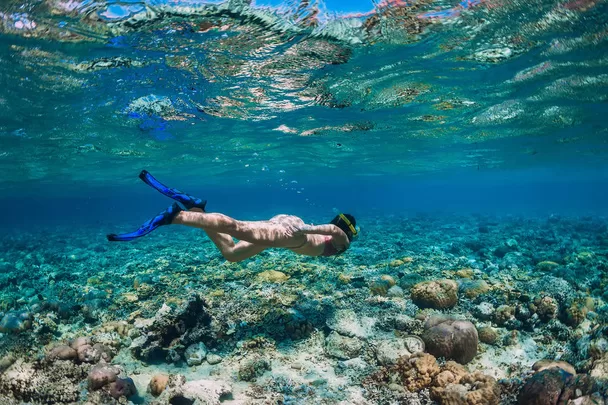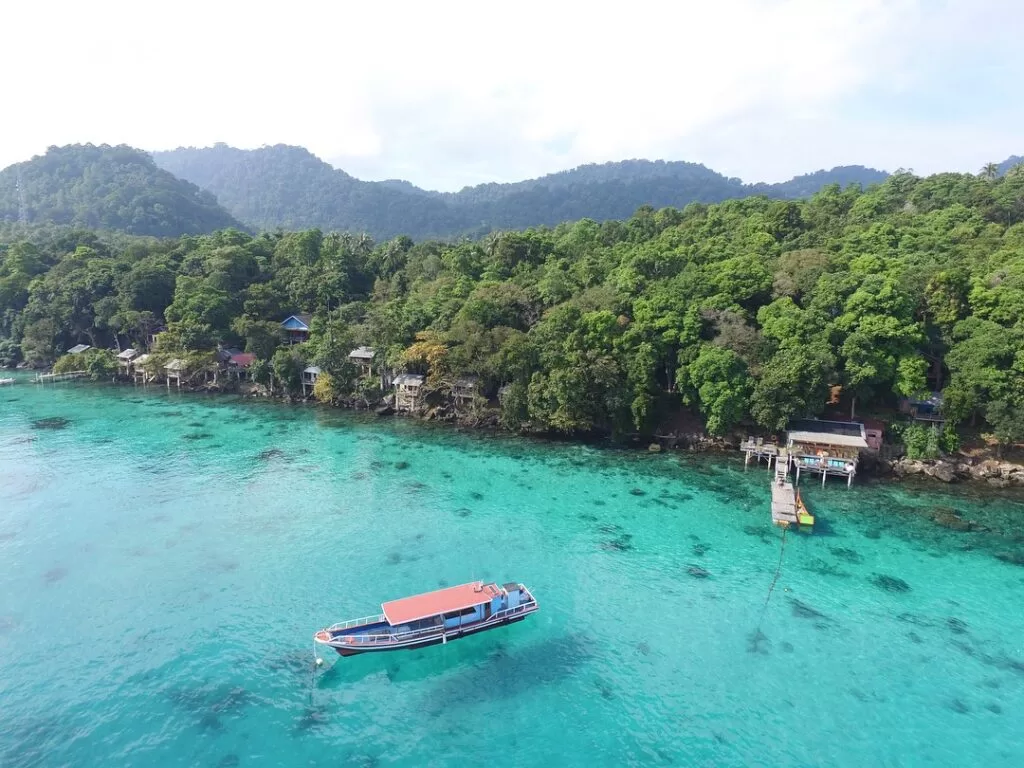Introduction
Indonesia, with its sprawling archipelago, has long been revered as a paradise for underwater enthusiasts. The appeal of its marine realm, from vibrant coral gardens to mysterious shipwrecks, makes underwater tourism Indonesia’s unique selling proposition in the global travel arena. This form of tourism isn’t just about the awe-inspiring experiences it offers; it’s a significant contributor to Indonesia’s tourism sector, driving both economic growth and international acclaim.

Bali: A Tourism Magnet with Underwater Delights
Nestled off Bali’s eastern coast, Tulamben welcomes divers to a surreal underwater museum. The USAT Liberty shipwreck, encrusted with corals and teeming with marine life, tells tales of history beneath the sea. Beyond shipwrecks, Tulamben is a treasure trove of marine biodiversity, hosting an array of creatures from macro critters to graceful mantas. Meanwhile, Nusa Penida, another Balinese gem, is renowned for its encounters with majestic manta rays. The island’s dive sites reveal a canvas of vibrant coral reefs, bustling with marine inhabitants and offering unparalleled underwater photography opportunities.

Komodo National Park: Diving Tourism’s Prime Destination
Not just famous for its land-roaming dragons, the waters surrounding the Komodo National Park are a diver’s dream. The region’s current-rich dive sites are frequented by large pelagics like sharks, rays, and occasionally, dolphins. These strong currents sculpt the underwater topography, resulting in fascinating terrains of walls, slopes, and pinnacles. Each dive here promises adventure and an array of marine wonders to witness.

Raja Ampat: The Crown Jewel of Underwater Tourism
Raja Ampat sits at the heart of the Coral Triangle, a region known for its staggering marine biodiversity. Divers and snorkelers in these waters are greeted by vast schools of fish, intricate coral formations, and the occasional passing shark or ray. But Raja Ampat isn’t just about the underwater spectacle; its dive resorts are often pioneers in conservation-focused tourism efforts. These establishments promote sustainable diving practices, ensuring that the marine wonders they showcase are preserved for future generations.

Sulawesi: A Blend of Culture and Underwater Tourism
Bunaken, off Sulawesi’s coast, is synonymous with crystal clear waters that house diverse marine life. Its underwater cliffs and walls play host to a plethora of species, making every dive a discovery. In contrast, the Lembeh Strait offers a muck diving paradise. Its sandy bottoms and muted landscapes hide critters and macro life that are a delight to discover, from flamboyant cuttlefish to tiny seahorses.

Sumatra: Off-the-beaten-track Tourism and Marine Adventures
Pulau Weh, located at the northern tip of Sumatra, is an untouched marine haven. Its coral gardens, bustling with life, are a testament to the island’s conservation efforts. For those venturing near the urban hubs, Bintan and Batam provide accessible dive sites. They offer quick marine getaways, perfect for weekend warriors seeking a blend of leisure and underwater exploration.

Challenges Facing Underwater Tourism in Indonesia
Like many marine destinations worldwide, Indonesia grapples with threats like coral bleaching due to rising sea temperatures. Environmental challenges, combined with the pressure of increasing tourist footprints, pose significant concerns. Striking a balance between promoting tourism growth and ensuring marine conservation becomes paramount for safeguarding Indonesia’s underwater jewels.

Promoting Sustainable Underwater Tourism
Dive operators play a pivotal role in championing conservation. By advocating for responsible dive practices, organizing cleanup drives, and educating tourists, they can influence positive change. Travelers, too, can adopt eco-friendly tourism practices. From choosing sustainable dive operators to minimizing waste, every action counts towards preserving the marine world.
The Economic Impact of Underwater Tourism in Indonesia
Underwater tourism doesn’t just satiate wanderlust; it fuels Indonesia’s economy. It creates jobs, supports local communities, and even stimulates sectors like hospitality and transportation. Moreover, as the demand for unique underwater experiences rises, Indonesia sees a surge in investment opportunities within the marine tourism sector.
Conclusion
The prospects for underwater tourism in Indonesia remain promising, teeming with possibilities and new sites to explore. However, the onus lies on both tourists and operators to ensure that their actions today leave a legacy of conservation for tomorrow. As Indonesia continues to allure divers from across the globe, the narrative shifts towards responsible and sustainable underwater exploration.

